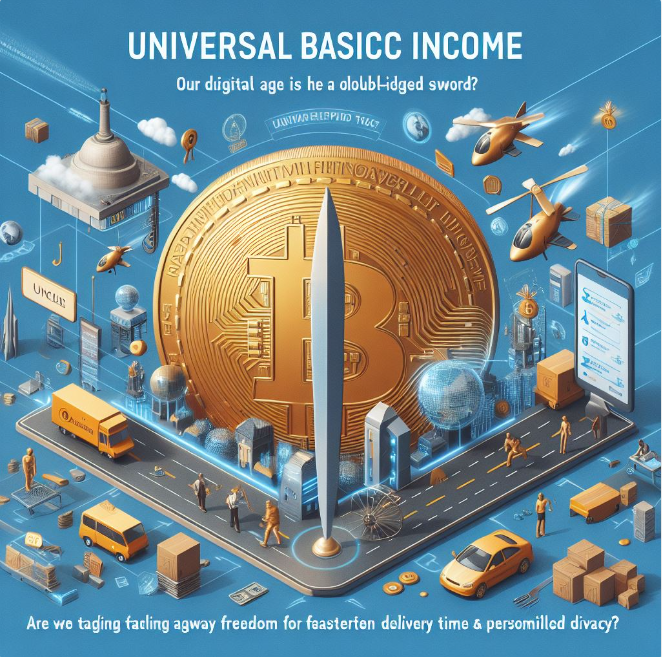The global financial landscape has undergone dramatic changes over the past few decades, characterised by an unprecedented surge in debt levels, both in the United States and globally. This trend has significant implications for the purchasing power of citizens worldwide, the stability of financial markets, and the future valuation of alternative assets such as Bitcoin (BTC) and gold.
The Explosion of U.S. Debt: A Threefold Increase
In 2008, the total U.S. debt stood at just under $10 trillion. Fast forward to today, and that figure has ballooned to roughly $30 trillion—a staggering threefold increase in just over a decade. This surge in debt is largely the result of aggressive monetary policies, including quantitative easing, which involves the Federal Reserve printing money to purchase government securities and other financial assets.
While these measures were initially designed to stabilise the economy during crises like the 2008 financial meltdown and the COVID-19 pandemic, they have had the side effect of significantly increasing the money supply. Essentially, this newly created money is “borrowed” from the future, with current consumption being financed at the expense of future savings. The long-term consequences of this approach are deeply concerning, particularly with regard to inflation and the erosion of purchasing power.
The Global Debt Picture: An Alarming Trend
The situation is not unique to the United States. In 2008, global debt—comprising government, corporate, and household debt—stood at approximately $173 trillion. As of today, that number has soared to over $300 trillion. This sharp rise is a reflection of the widespread adoption of similar monetary policies by central banks worldwide, aimed at boosting economic growth in the short term but potentially compromising long-term financial stability.
As global debt continues to grow, the risk of inflationary pressures increases. When governments and central banks flood the market with cheap money, it often leads to an increase in demand for goods and services. However, if the supply of these goods and services does not keep pace, prices rise, leading to inflation. This inflation erodes the value of money, diminishing the purchasing power of consumers globally.
Valuing Bitcoin Based on Global Debt Increase
Since its launch in 2009, Bitcoin has been seen by many as a hedge against the excesses of traditional fiat currencies, which are backed by governments that can print money at will. If we were to assign a value to Bitcoin based solely on the increase in global debt since its inception, we could gain some insight into how undervalued the cryptocurrency might be.
Global debt in 2008: Approximately $173 trillion
Global debt in 2024: Over $300 trillion
Increase in global debt: $127 trillion
Total Bitcoin supply: 21 million BTC (max supply)
To calculate the potential value of Bitcoin based on the increase in global debt:
Debt per BTC
Increase in Global Debt
Total Bitcoin Supply
BTC = Increase in Global Debt / Bitcoin Supply
127,000,000,000 / 21,000,000 = $6,048,000 per BTC
This calculation suggests that if we were to value Bitcoin solely based on the increase in global debt, each Bitcoin could potentially be worth over $6 million. This is a far cry from its current market value, indicating that Bitcoin might be significantly undervalued when considering the sheer scale of global debt accumulation.
The Rise of Bitcoin and Gold: Safe Havens in Uncertain Times
Amid this backdrop of rising debt and potential inflation, alternative assets such as Bitcoin and gold have seen unprecedented interest. Bitcoin, in particular, has experienced a meteoric rise, with its value increasing from mere pence in its early days to tens of thousands of pounds today. This rise is not merely speculative; it reflects growing concerns about the stability of traditional fiat currencies, which are backed by governments that continue to print money at alarming rates.
Gold, too, has historically been viewed as a safe haven during times of economic uncertainty. Its limited supply—determined by the amount already mined and the potential to find more in the future—adds to its appeal as a hedge against inflation. Unlike fiat currencies, gold cannot be “printed,” which makes it a store of value over the long term.
The Future Outlook: A Shift in Economic Paradigms
As the world grapples with the long-term effects of massive debt accumulation and the potential for sustained inflation, the financial paradigms we have taken for granted may shift. The scarcity of assets such as Bitcoin and gold will likely drive their value to unprecedented levels, as investors seek refuge from the volatility and potential devaluation of fiat currencies.
However, this shift also poses risks. The growing reliance on alternative assets could lead to increased market volatility, particularly if speculative bubbles form around these assets. Additionally, the broader economic implications of rising debt levels—such as increased taxation or reduced public spending to service debt—could lead to slower economic growth in the future.
Conclusion
The current trajectory of global debt is unsustainable, and its effects will likely be felt for generations to come. As central banks and governments continue to grapple with the delicate balance of stimulating economic growth while managing inflationary pressures, the role of alternative assets such as Bitcoin and gold will become increasingly prominent. These assets, driven by their scarcity and growing demand, may offer a hedge against the uncertainties of a debt-laden global economy, but they also come with their own set of challenges and risks. The financial landscape is evolving, and both investors and policymakers must navigate these changes carefully to ensure long-term stability and prosperity.

